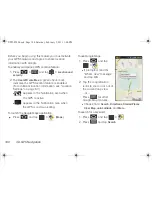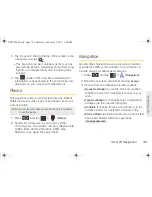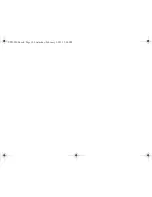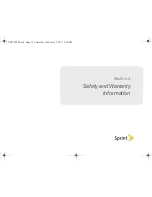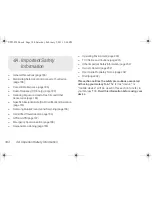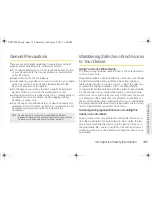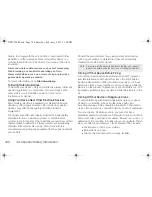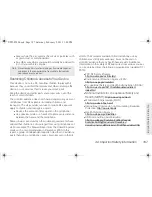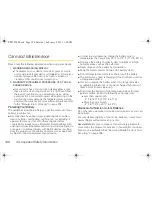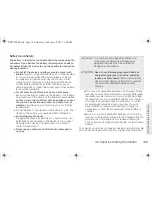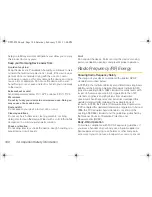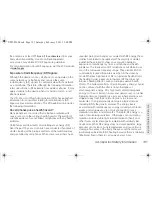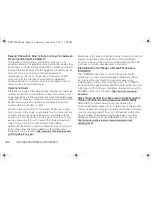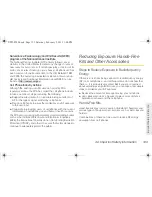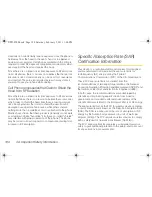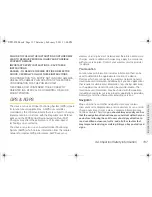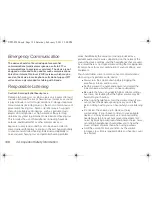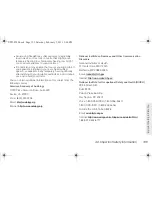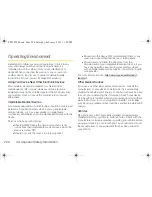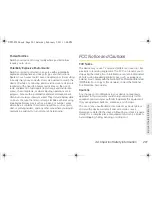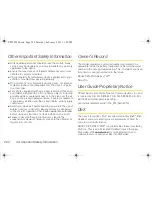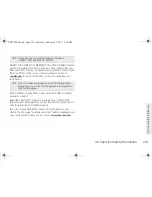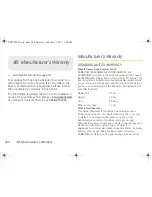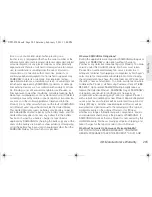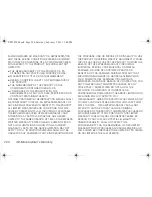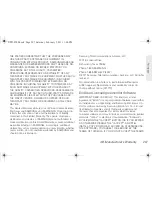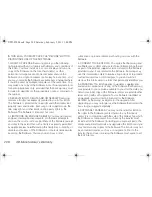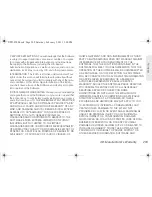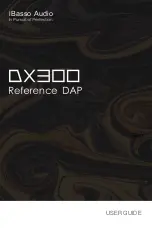
194
4A. Important Safety Information
Headsets can substantially reduce exposure since the phone is
held away from the head in the user's hand or in approved
body-worn accessories. Cell phones marketed in the U.S. are
required to meet RF exposure compliance requirements when
used against the head and against the body.
Since there are no known risks from exposure to RF emissions
from cell phones, there is no reason to believe that hands-free
kits reduce risks. Hands-free kits can be used for convenience
and comfort. They are also required by law in many states if
you want to use your phone while driving.
Cell Phone Accessories that Claim to Shield the
Head from RF Radiation
Since there are no known risks from exposure to RF emissions
from cell phones, there is no reason to believe that accessories
which claim to shield the head from those emissions reduce
risks. Some products that claim to shield the user from RF
absorption use special phone cases, while others involve
nothing more than a metallic accessory attached to the phone.
Studies have shown that these products generally do not work
as advertised. Unlike "hand-free" kits, these so-called "shields"
may interfere with proper operation of the phone. The phone
may be forced to boost its power to compensate, leading to an
increase in RF absorption.
Specific Absorption Rate (SAR)
Certification Information
Your device is a radio transmitter and receiver. It is designed
and manufactured not to exceed the exposure limits for
radiofrequency (RF) energy set by the Federal
Communications Commission (FCC) of the U.S. Government.
These FCC exposure limits are derived from the
recommendations of two expert organizations: the National
Council on Radiation Protection and Measurement (NCRP) and
the Institute of Electrical and Electronics Engineers (IEEE).
In both cases, the recommendations were developed by
scientific and engineering experts drawn from industry,
government, and academia after extensive reviews of the
scientific literature related to the biological effects of RF energy.
The exposure limit set by the FCC for wireless devices employs
a unit of measurement known as the Specific Absorption Rate
(SAR). The SAR is a measure of the rate of absorption of RF
energy by the human body expressed in units of watts per
kilogram (W/kg). The FCC requires wireless devices to comply
with a safety limit of 1.6 watts per kilogram (1.6 W/kg).
The FCC exposure limit incorporates a substantial margin of
safety to give additional protection to the public and to account
for any variations in measurements.
SPH-P100.book Page 194 Saturday, February 5, 2011 3:00 PM
Summary of Contents for Galaxy Tab SPH-P100
Page 13: ...Section 1 Getting Started SPH P100 book Page 1 Saturday February 5 2011 3 00 PM ...
Page 18: ...SPH P100 book Page 6 Saturday February 5 2011 3 00 PM ...
Page 19: ...Section 2 Your Device SPH P100 book Page 7 Saturday February 5 2011 3 00 PM ...
Page 137: ...Section 3 Sprint Service SPH P100 book Page 125 Saturday February 5 2011 3 00 PM ...
Page 194: ...SPH P100 book Page 182 Saturday February 5 2011 3 00 PM ...
Page 224: ...SPH P100 book Page 212 Saturday February 5 2011 3 00 PM ...
Page 238: ...SPH P100 book Page 226 Saturday February 5 2011 3 00 PM ...

